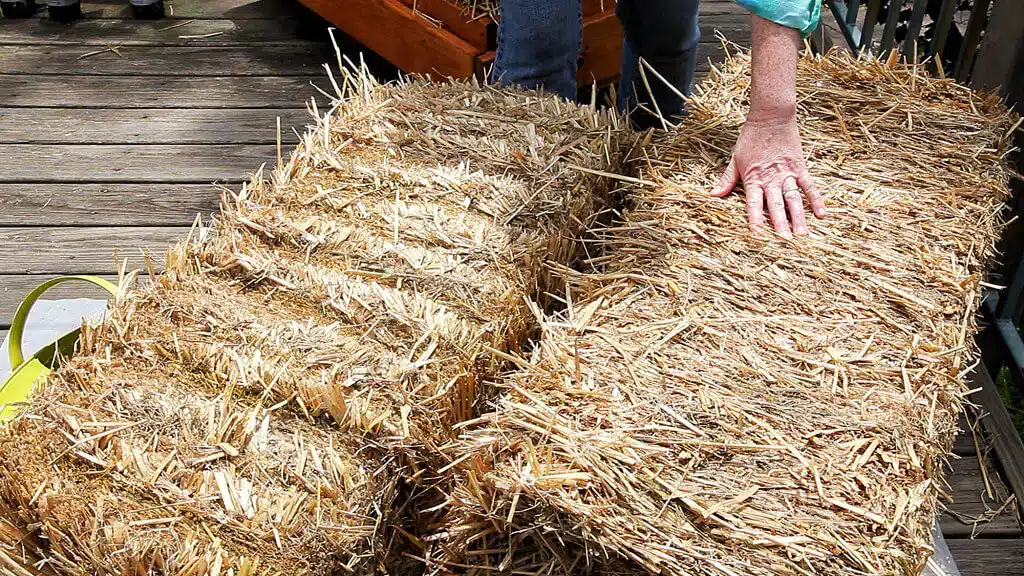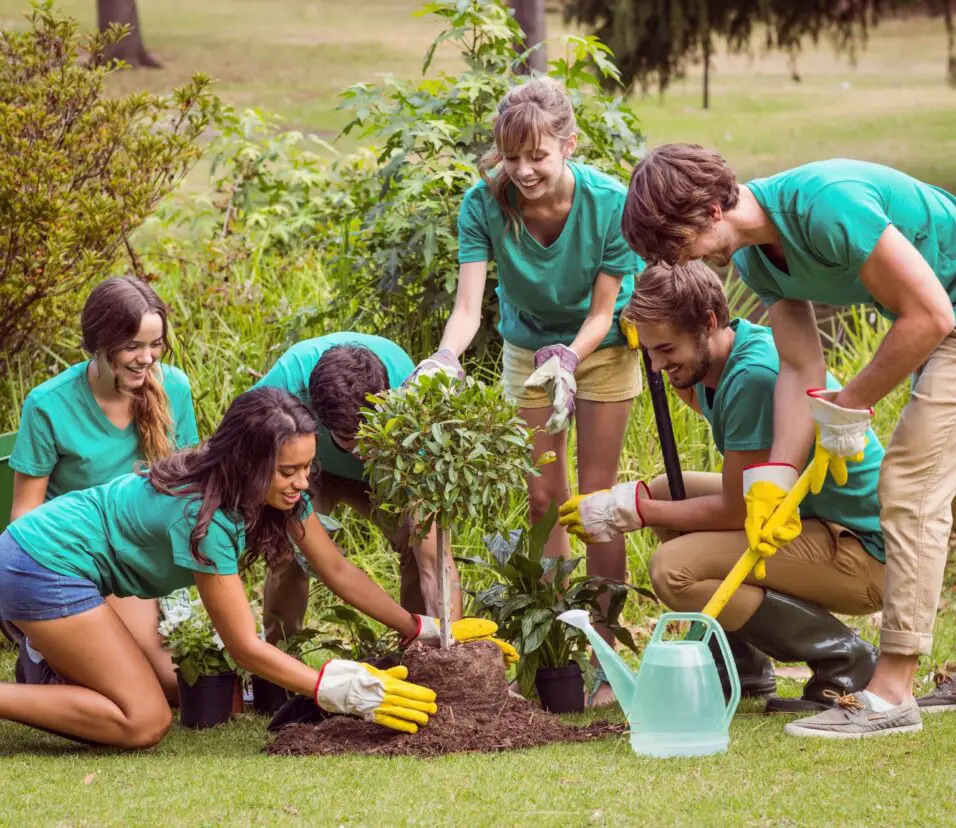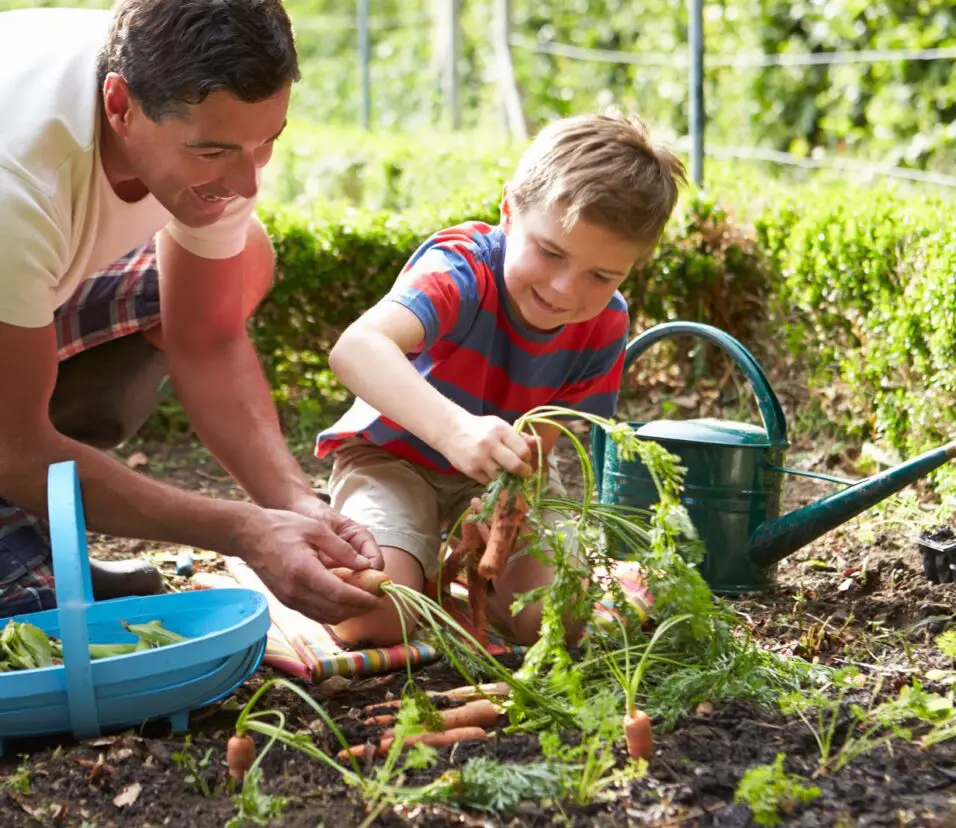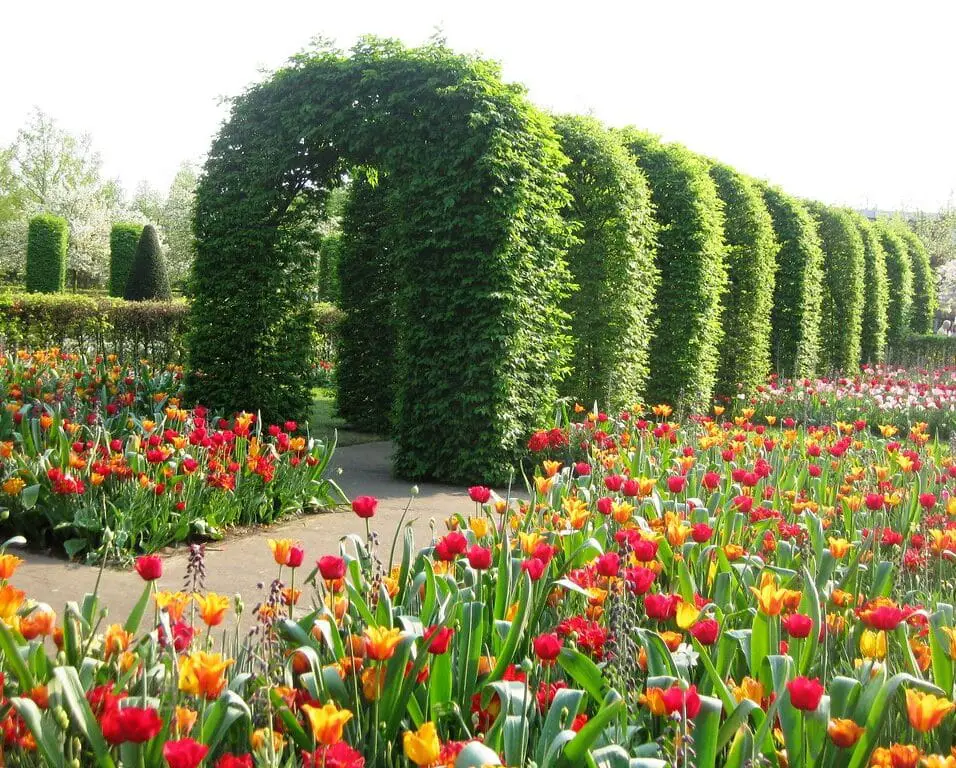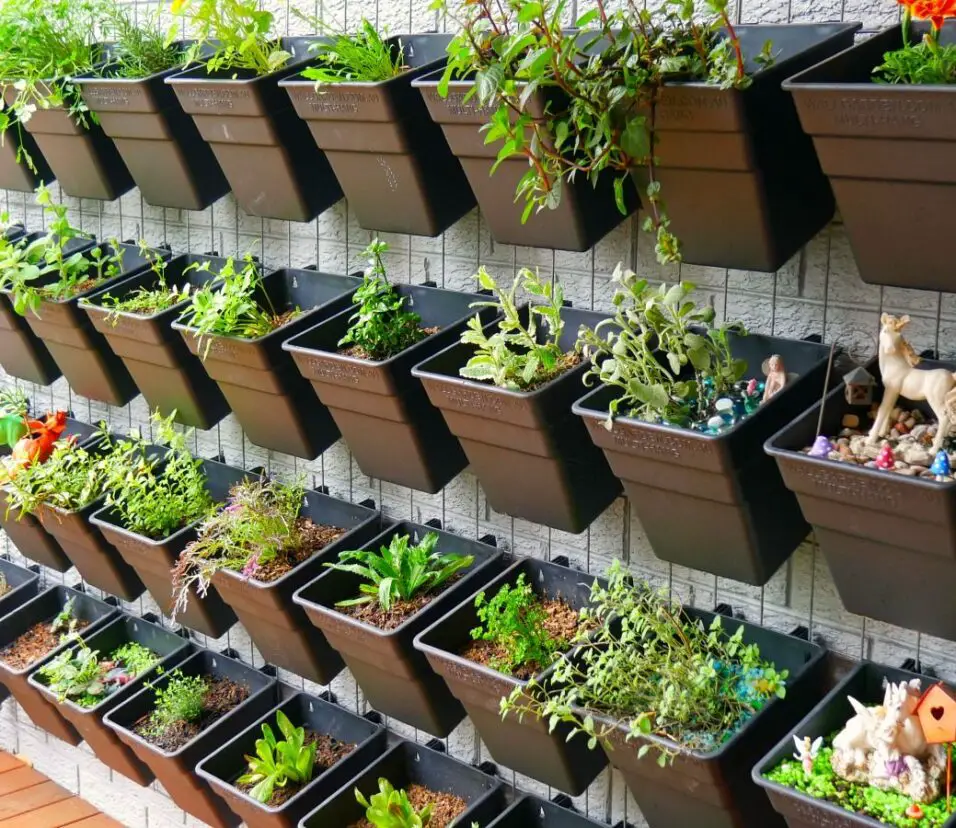How To Condition Straw Bales For Gardening
Introduction
How To Condition Straw Bales For Gardening: Gardening is a popular hobby that allows individuals to connect with nature and create beautiful outdoor spaces. However, traditional gardening methods can be time-consuming and require a significant amount of space. This has led to the rise in popularity of alternative gardening techniques, such as straw bale gardening. Straw bale gardening leave is a unique and innovative method that allows individuals to grow plants in straw bales, eliminating the need for traditional soil beds.
If you’re short on outside space but would still like to grow your own food, try straw bale gardening! Additionally, it is a great alternative for individuals who struggle with traditional gardening due to physical limitations or lack of access to suitable soil.
Before embarking on a straw bale gardening journey, it is essential to understand the process of conditioning straw bales. Conditioning is a crucial step that prepares the straw bales for planting and ensures optimal growing conditions for plants. By following the proper conditioning techniques, gardeners can create a nutrient-rich environment within the straw bales, allowing plants to thrive.
Conditioning straw bales involves a process of decomposition, which breaks down the straw and creates a fertile growing medium. This process mimics the natural decomposition that occurs in traditional soil beds, providing plants with the necessary nutrients and moisture for healthy growth.
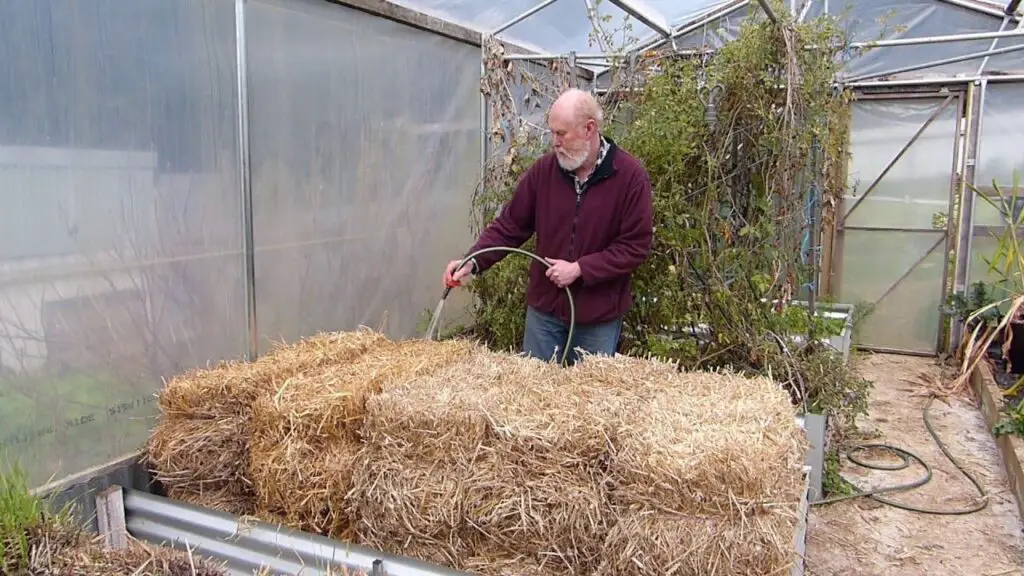
What is the best fertilizer for straw bale gardening?
Complete fertilizers, such as 8-8-8 or 10-10-10, is an option for maintaining plant health. Evenly apply ½ to 1 cup of fertilizer per bale each month and water in adequately. Liquid fertilizers can be distributed using the automated recycling water bottle system.
When it comes to straw bale gardening, choosing the right fertilizer is crucial for the success of your plants. Straw bales provide a unique growing medium that requires specific nutrients to support healthy growth. With so many options available, it can be overwhelming to determine the best fertilizer for your straw bale garden. However, by considering the needs of your plants and understanding the different types of fertilizers, you can make an informed decision.
One of the most popular fertilizers for straw bale gardening is organic compost. Compost is rich in nutrients and beneficial microorganisms that help improve soil structure and fertility. It provides a slow-release source of nutrients, ensuring a steady supply for your plants throughout the growing season. Organic compost also helps retain moisture in the bales, reducing the need for frequent watering.
How long does straw last in a garden?
Damaged or fallen straw bales might still serve a purpose in the garden. In some cases, mulching and composting are the best ways to utilize it. Straw bales should be replaced every year or two at the very least.
Straw has a variety of uses in the garden, including that of mulch, weed barrier, and even temperature regulator. Many eco-conscious people are still curious about the recommended straw replacement frequency.
The type of straw used is one of the most important criteria in determining how long straw will last in a garden. Straw comes from several grains and includes wheat straw, oat straw, and barley straw, among others. The qualities and longevity of each variety vary. Wheat straw is a strong and long-lasting form of straw. However, oat straw may decompose more rapidly and require more frequent replacement.
How long do straw bales last?
How long do straw bales last outside? If you keep your bales out of the elements, especially moisture, they can last for years. However, if allowed to absorb moisture and heat, as would happen with a straw bale garden or planter, for example, hay bales will begin to break down and only last for one growing season.
Due to its insulating qualities and eco-friendliness, straw bales are frequently utilized in building. The subject of how long straw bales last, though, is a common one. Straw bales’ durability depends on a number of variables, such as the type of straw used, the methods of construction employed, and the surrounding environment.
The first factor in how long straw bales will last is the quality of the straw used to make them. In comparison to late-harvested or wet-stored straw, the longevity of early-harvested, well-preserved straw is significantly greater. If you take care of your straw bales and store them properly, they can last for decades.
Secondly, the construction techniques used can also impact the lifespan of straw bales. Properly compacting the straw and using a sturdy frame can help ensure the structural integrity of the bales. Additionally, applying a protective coating, such as lime or clay plaster, can help protect the straw from moisture and pests, further extending their lifespan.
How do you preserve straw bales?
When the weather is dry, any water that has seeped into a bale via its sidewalls will evaporate. Saturated bales have trouble draining because water runs from the top and pools at the bottom. This might have significant repercussions.
Straw bales can be used for a variety of purposes and can be stored for long periods of time without deteriorating or attracting pests like mildew or insects. There are benefits and drawbacks to using each different storage medium.
Pesticides and anti-rotting chemicals are added to the straw to make it last longer. A spray is applied to the bales, and the preservative penetrates the straw to form a barrier.
Covering straw bales with a tarp or other watertight material can extend their useful life.
What happens if straw bales get wet?
Wet straw is particularly inefficient as bedding, so it should be utilized as quickly as possible for the least important animals. Wet bales won’t dry out correctly, leading to overheating and rotting.
Straw bales, for starters, can begin to rot as soon as they become damp. When wet, the dried plant stems that make up straw offer a prime environment for the growth of bacteria and fungi. Because of the action of these microbes, the straw rots and becomes weak. In warm and humid settings, this breakdown process can proceed swiftly.
Straw bales contaminated with insects pose health and sanitation risks if used for animal bedding.
Finally, moist bales of straw are highly combustible. Dry straw is easily incendiary but can be used as a temporary water container when wet and burns slowly as a heat source.In the presence of high temperatures and a lack of air circulation, this could result in spontaneous combustion. For this reason, it’s crucial to use caution if storing or handling wet bales of straw.
Finally, it’s worth noting that damp straw bales may be less effective as insulation. Insulation made from straw bales is popular because of the material’s airtightness and resistance to heat transfer. However, their insulating properties may diminish if they get wet.
Are there any specific steps or techniques to follow when conditioning straw bales for gardening?
When it comes to conditioning straw bales for gardening, there are indeed specific steps and techniques that you should follow to ensure success. The first step is to thoroughly wet the bales, either by soaking them in water or by using a hose to saturate them. This is an important step as it kickstarts the decomposition process within the bales.
After wetting the bales, the next step is to apply a nitrogen-rich fertilizer, such as blood meal or chicken manure, to the top of the bales. This will provide the necessary nutrients for the decomposition process. It is important to evenly distribute the fertilizer and avoid applying too much, as this can lead to excessive heat and potential damage to your plants.
Compost or potting soil can be added on top of the bales after fertilizer has been spread. This will keep your plants from wasting water and add nutrients to their diet. If you want your bales to condition properly, you should water them once a day.
What materials or ingredients are needed to condition straw bales for gardening?
When it comes to conditioning straw bales for gardening, there are a few key materials and ingredients that you will need to ensure success. The first and most important item you will need is the straw bales themselves. If you want your plants to thrive, it’s best to use straw bales produced from wheat, rice, or barley straw because they decompose more quickly.
In addition to the straw bales, you will also need a nitrogen source to help kickstart the decomposition process. This can be in the form of blood meal, bone meal, or a high-nitrogen fertilizer. The nitrogen will help to break down the straw and provide essential nutrients for your plants. You will also need a source of water to keep the bales moist throughout the conditioning process.
Once you have gathered your materials, the conditioning process can begin. It is important to note that conditioning straw bales can take anywhere from two to four weeks, so patience is key. During this time, you will need to water the bales thoroughly, making sure that they are consistently moist but not waterlogged. This will help to activate the decomposition process and create a favorable environment for plant growth.
How long does it typically take to condition straw bales for gardening?
Conditioning straw bales for gardening is a process that requires time and patience. On average, it takes about two weeks to fully condition a straw bale for planting. However, the exact duration can vary depending on various factors such as the weather conditions, the type of straw used, and the specific method of conditioning.
The bales of straw must be soaked in water for a number of days before the conditioning process can begin. This increases the growth of beneficial bacteria inside the bale and hastens its breakdown. It might be necessary to water the bale frequently during this time to maintain the proper moisture content.
The bale needs to be fertilized with a nitrogen-rich fertilizer after the initial soaking. This will provide the breakdown process the nutrients it needs to continue. After the first week, the bale can receive fertilizer applications every other day.
Are there any specific tips or recommendations for successfully conditioning straw bales for gardening?
When it comes to successfully conditioning straw bales for gardening. There are a few tips and recommendations that can greatly improve your results. Firstly, it is important to choose high-quality straw bales that are free from mold or other contaminants. This will ensure that your plants have a healthy environment to grow in.
Before planting, it’s best to hydrate the bales every day for about two weeks.
It is also essential to condition the straw bales with a nitrogen-rich fertilizer. Your plants can then develop and flourish thanks to these nutrients. A balanced fertilizer, such as one with a ratio of 10-10-10 or close to it, is suggested.
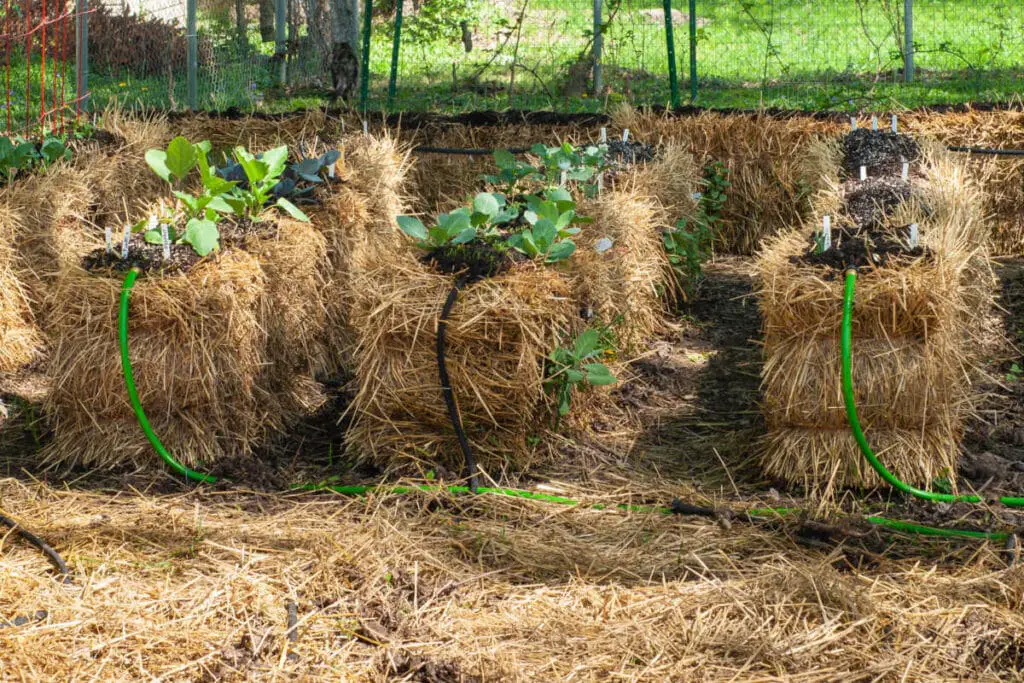
Conclusion
Overall, conditioning straw bales for gardening is a highly effective and sustainable method that offers numerous benefits for both the plants and the environment. By following the proper steps and techniques, gardeners can create a nutrient-rich and weed-free growing medium. That promotes healthy plant growth and reduces the need for traditional soil. Additionally, straw bale gardening is a great option for those with limited space or poor soil quality, as it can be done in small areas or even on concrete surfaces.
One of the key advantages of conditioning straw bales is the ability to control the nutrient content of the growing medium. By adding a balanced fertilizer and allowing it to break down within the bales. Gardeners can ensure that their plants receive the necessary nutrients for optimal growth. This method also eliminates the need for chemical fertilizers. Reducing the risk of water pollution and minimizing the environmental impact of gardening.
Conditioning straw bales for gardening is a sustainable and efficient method that offers numerous benefits for both gardeners and the environment. By following the proper steps and techniques. Gardeners can create a nutrient-rich and weed-free growing medium that promotes healthy plant growth. This method is particularly advantageous for those with limited space or poor soil quality. because it can be done on hard surfaces like concrete and takes up minimal room. Additionally, conditioning straw bales allows for control over nutrient content and reduces. The need for chemical fertilizers, minimizing the environmental impact of gardening. Overall, straw bale gardening is a practical and eco-friendly. Solution for anyone looking to grow their own plants in a sustainable and efficient manner.



